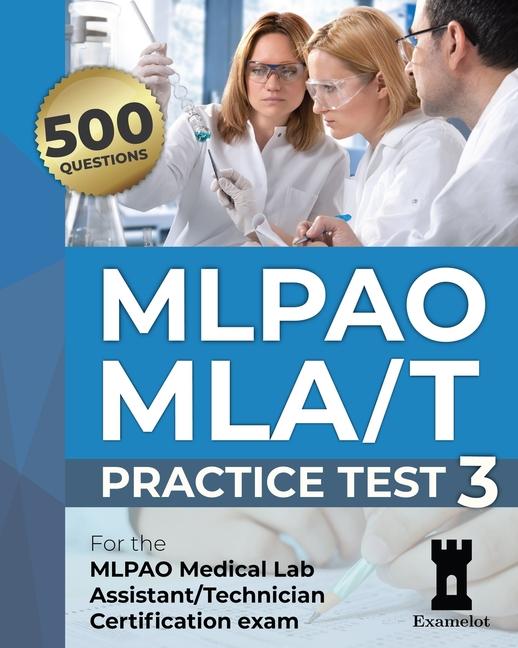Description
This is the third book in the series. See the complete series at amazon.ca/dp/B08Z459HTG.
Taking the MLPAO exam? If yes, then this book of practice questions is for you. This book contains an additional 500 multiple-choice questions to practice with. Questions are based on the official exam competency guidelines and accompanied by explanations, allowing you to understand the reasoning behind the answers.
Questions are separated into the thirteen competencies of the exam: Standards of Practice; Medical Terminology; Basic Biology, Anatomy & Physiology; Laboratory Mathematics and Quality Assurance; Specimen Procurement, Processing and Data Collection; Laboratory Safety; Laboratory Equipment; Histology and Cytology; Clinical Microbiology; Clinical Chemistry; Clinical Hematology; Transfusion Medicine; and Electrocardiograms.
SAMPLE QUESTIONS
To give you a preview, here are four sample questions from the book:
1) STANDARDS OF PRACTICE
What is a regulated profession?
a. A profession that has no legal requirement or restriction on practice
b. A profession that requires a specific professional qualification
c. A profession that requires regular drug testing
d. A profession that requires work experience
e. A profession where workers work regular, 9-5 hours
2) MEDICAL TERMINOLOGY
What term means 'without infection'?
a. Antibiotic
b. Aseptic
c. Septic
d. Spore
e. Stasis
3) BASIC BIOLOGY, ANATOMY AND PHYSIOLOGY
What is the name of the saclike membrane surrounding the heart?
a. Bundle of His
b. Endocardium
c. Interatrial septum
d. Pericardium
e. Ventricle
4) LABORATORY MATHEMATICS AND QUALITY ASSURANCE
If 0.2 mL of a sample is added to 5 mL of diluent, what is the dilution factor?
a. 4.8
b. 5.2
c. 25
d. 26
e. 27
Answers
1) b. A profession that requires a specific professional qualification
A regulated profession is governed by specific legal requirements, which often include obtaining professional qualifications and certifications. These regulations ensure that people practicing in the profession meet the required competency standards.
2) b. Aseptic
Aseptic means without infection, as in aseptic meningitis.
3) d. Pericardium
The pericardium is the saclike membrane that surrounds and protects the heart. It contains fluid that lubricates the heart's movements, reducing friction as the heart beats.
4) d. 26
The formula for the dilution factor is:
dilution factor = final volume / initial volume
where the final volume is the solute volume plus the solvent volume.
Inserting the values into the formula gives us:
dilution factor = (5 + 0.2)/0.2 = 5.2/0.2 = 26
Product Details
- Mar 12, 2021 Pub Date:
- 9798720979348 ISBN-10:
- 9798720979348 ISBN-13:
- English Language




